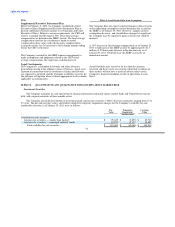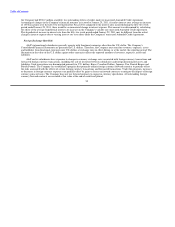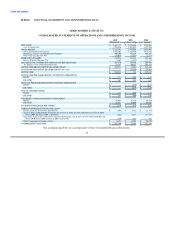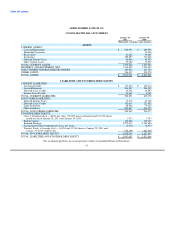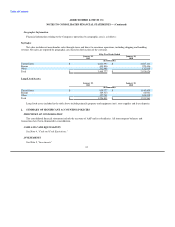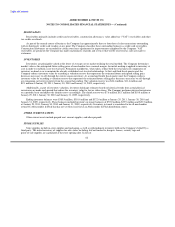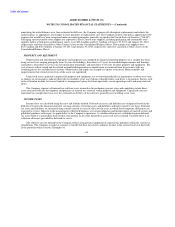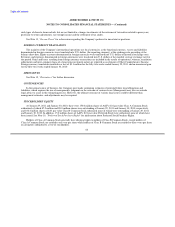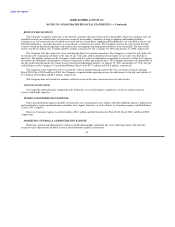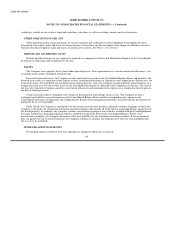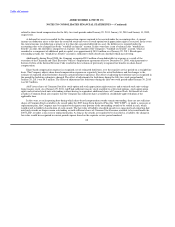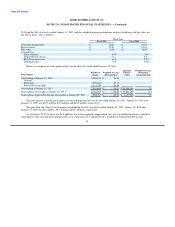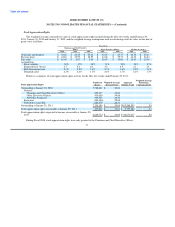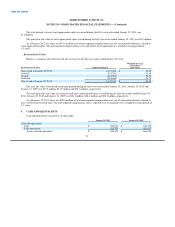Abercrombie & Fitch 2010 Annual Report Download - page 65
Download and view the complete annual report
Please find page 65 of the 2010 Abercrombie & Fitch annual report below. You can navigate through the pages in the report by either clicking on the pages listed below, or by using the keyword search tool below to find specific information within the annual report.
Table of Contents
ABERCROMBIE & FITCH CO.
NOTES TO CONSOLIDATED FINANCIAL STATEMENTS — (Continued)
RECEIVABLES
Receivables primarily includes credit card receivables, construction allowances, value added tax ("VAT") receivables and other
tax credits or refunds.
As part of the normal course of business, the Company has approximately three to four days of sales transactions outstanding
with its third-party credit card vendors at any point. The Company classifies these outstanding balances as credit card receivables.
Construction allowances are recorded for certain store lease agreements for improvements completed by the Company. VAT
receivables are payments the Company has made on purchases of goods and services that will be recovered as sales are made to
customers.
INVENTORIES
Inventories are principally valued at the lower of average cost or market utilizing the retail method. The Company determines
market value as the anticipated future selling price of merchandise less a normal margin. An initial markup is applied to inventory at
cost in order to establish a cost-to-retail ratio. Permanent markdowns, when taken, reduce both the retail and cost components of
inventory on hand so as to maintain the already established cost-to-retail relationship. At first and third fiscal quarter end, the
Company reduces inventory value by recording a valuation reserve that represents the estimated future anticipated selling price
decreases necessary to sell-through the current season inventory. At second and fourth fiscal quarter end, the Company reduces
inventory value by recording a valuation reserve that represents the estimated future selling price decreases necessary to sell-through
any remaining carryover inventory from the season then ending. The valuation reserve was $24.4 million, $11.4 million and
$9.1 million at January 29, 2011, January 30, 2010 and January 31, 2009, respectively.
Additionally, as part of inventory valuation, inventory shrinkage estimates based on historical trends from actual physical
inventories are made each period that reduce the inventory value for lost or stolen items. The Company performs physical inventories
on a periodic basis and adjusts the shrink reserve accordingly. The shrink reserve was $7.6 million, $8.1 million and $10.8 million at
January 29, 2011, January 30, 2010 and January 31, 2009, respectively.
Ending inventory balances were $385.9 million, $310.6 million and $372.4 million at January 29, 2011, January 30, 2010 and
January 31, 2009, respectively. These balances included inventory in transit balances of $55.0 million, $39.9 million and $23.5 million
at January 29, 2011, January 30, 2010 and January 31, 2009, respectively. Inventory in transit is considered to be all merchandise
owned by Abercrombie & Fitch that has not yet been received at an Abercrombie & Fitch distribution center.
OTHER CURRENT ASSETS
Other current assets include prepaid rent, current supplies, and other prepaids.
STORE SUPPLIES
Store supplies include in-store supplies and packaging, as well as replenishment inventory held on the Company's behalf by a
third party. The initial inventory of supplies for new stores including, but not limited to, hangers, frames, security tags and
point-of-sale supplies are capitalized at the store opening date. In lieu of
62



